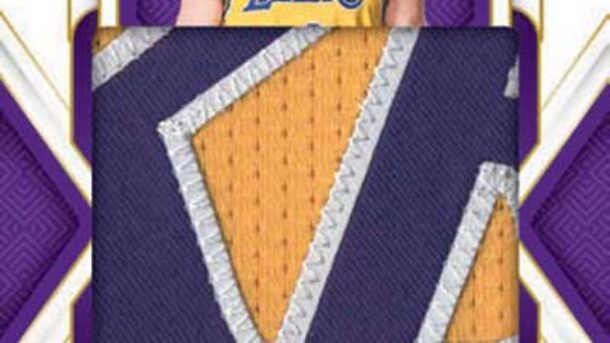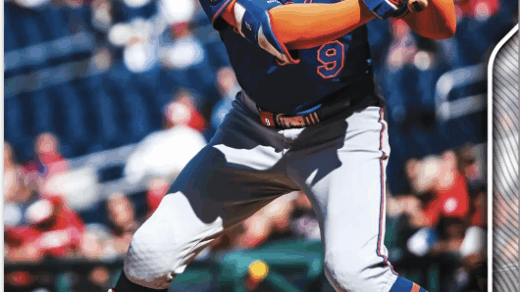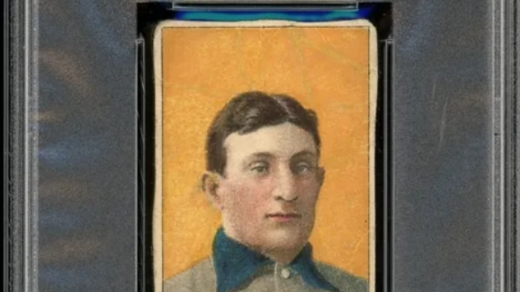The annual velvet-rope moment of basketball cards is back, and it’s wearing a tux. Panini National Treasures 2024-25 doesn’t so much arrive as it makes an entrance, the kind that turns a simple nine-card box into a black-tie affair. This is the release that gets circled on hobby calendars, that inspires group breaks stacked like playoff brackets, and that converts grown collectors into superstitious pack-whisperers. The cards are heavy, the signatures are bold, and the promise—however improbable—of a Logoman shimmering in the middle of a stack is enough to make hands tremble.
The configuration is deceptively minimal: one pack, nine cards, and a format that leaves no room for fluff. Each hobby box delivers four autographs and four memorabilia cards, plus a single base or parallel that—this being National Treasures—can still do some serious talking. First Off The Line boxes raise the decibel level further with a guaranteed Rookie Patch Autograph numbered to 20 or less, the kind of promise that has collectors queuing up early, refreshing checkouts, and angling for those coveted low-numbered chase pieces. Boxes come four to a case, which turns every sealed case into a miniature treasure chest with measurable odds and immeasurable drama.
At the heart of the product remains the most famous debutant ball in modern cardboard: the Rookie Patch Autographs. These aren’t just rookie cards, they’re coronations, with on-card signatures and jumbo swatches that serve as a résumé and a billboard in one. The low serial numbering cements their status. Whether it’s a three-color window with stitching or an eye-popping tag that practically waves, the right RPA can anchor a collection or an auction lot for years. Parallels pile on grades of rarity, marching down through tiers into the land of one-of-ones, where the Logoman versions live like mythic beasts. Pull one and it’s immediately less of a card and more of a story.
This year adds a clever historical wink with Retro 2007 Patch Autographs, a crossover homage to 2007 National Treasures Football—an era that predates Panini’s NBA tenure but never left the hobby’s collective memory. The result is a design throwback with modern players and materials: squared-off elegance, generous patch windows, and a layout that whispers classic while holding up to contemporary scrutiny. It’s part nostalgia, part remix, and all hobby catnip for collectors who can spot a design lineage from across the room.
Booklets, as ever, bring a theater of their own. Hardwood Graphs unfold like a miniature pop-up arena, revealing a panoramic court and the sort of autograph space that begs for a signature worth framing. Treasures Autograph Booklets go vertical and double down on memorabilia, stacking pieces and ink in a format that feels less like a “card” and more like a keepsake program from the league’s fanciest night out. They don’t just sit in a slab; they command a stage.
Autograph content sprawls across an array of themes that give this set its personality. Gladiators flexes swagger; Hometown Heroes Autographs taps the civic pride vein; International Treasure Autographs celebrates the global empire the NBA has become, with signatures from stars whose road to the league started on courts far from American suburbs. Logoman Autographs, of course, are headline magnets every year, equal parts visual spectacle and rarity. And Treasured Tags turns laundry loops and label edges into showpieces—if a jersey’s most overlooked details have a shrine, this is it.
On the memorabilia front, National Treasures continues to load up on oversized swatches and multi-piece puzzles. Colossal relics remain crowd-pleasers with their grand-window uniform pieces that are basically fabric billboards. Franchise Treasures pays homage to team legends, pairing lore with threads. Matchups pits peers and rivals on the same card for a slice of narrative—two careers, one piece of cardboard, and a tally of jersey windows you can count like rebounds. Rookie Patches 2010 revisits a fan-favorite look, while Treasured Tags leans into ultra-rare materials that elevate even a no-ink card into a “did you just see that?” moment.
The checklist structure keeps order in the gallery. Veterans headline the base set running through card 100, a roll call with star power to spare: LeBron James, Stephen Curry, Luka Doncic, Nikola Jokic, Giannis Antetokounmpo, Jayson Tatum, and Victor Wembanyama are the kinds of names that turn even a base parallel into something special. Rookie Patch Autographs take over in the 101–150 range, featuring the most coveted first-year talent. The Rookie Patches (no autograph) complete the run through the early 160s, giving collectors a clean progression from established greatness to emerging promise. Parallels descend through numbered tiers—out of 75 and down the staircase—to true one-of-ones that redefine the word “hit.”
As for the rookies, the class brings its own storyline. Bronny James Jr. hovers at the intersection of pedigree and potential, a chase card magnet in any configuration. Dalton Knecht lights up the charts as a plug-and-score threat, Stephon Castle adds two-way intrigue, and the French connection of Zaccharie Risacher and Alexandre Sarr gives international collectors every reason to keep a close eye on breaks. RPAs of this group will set early benchmarks for the product, fuel debates, and possibly spark bidding wars when low-numbered versions surface.
Release day is set for August 15, 2025, a date likely to see social feeds filled with slow-roll videos and decibel-spiking reveals. The math is simple enough to tattoo on the hobby brain: nine cards per pack, one pack per box, four boxes per case. The practical translation: not many cards, but nearly every one of them is a headline. Hobby boxes include four autographs, four memorabilia cards, and one base or parallel; First Off The Line sweetens the pot with a guaranteed RPA numbered to 20 copies or fewer, a distinction that can define a break in a single pull.
Why does National Treasures still feel like the hobby’s annual coronation? Prestige is part of it, but the real secret is how many different types of collectors it speaks to at once. The RPA true believers treat these as a player’s definitive rookie—the gold standard that anchors PC shelves and investor vaults. The booklet crowd gets a larger-than-life canvas. The Logoman hunters chase a rarity so dramatic it almost requires its own insurance rider. International fans find geographic and national pride stitched into the checklist. And those who love the intersection of design, texture, and ink see a showcase of what premium manufacturing can do when it takes itself seriously.
All the while, National Treasures manages to feel both traditional and evolving. The designs don’t shout; they project. The fonts are confident without being flashy, the borders frame rather than distract, and the patches are the stars they were always meant to be. Even the lone base or parallel in a box arrives with a sense of ceremony, a reminder that scarcity isn’t always about print runs—it can be about intention.
Collectors who play the long game will zero in on condition and composition: clean on-card autographs, patch windows with real character, prime numbering, and parallels that land in the sweet spot between rare and recognizable. Group-break regulars will parse case patterns, weigh FOTL versus hobby box calculus, and track early sales to find value pockets before the market stabilizes. And set builders—yes, even for a release this premium—will quietly work through numbering and parallels, pursuing the satisfaction of completion in a landscape designed for highlights.
None of this is cheap, of course. National Treasures never is. But the price of admission has always been part of its mythology. Every sealed box carries a little bit of theater, a little bit of roulette, and the possibility—no matter how slim—that a superstar’s face will peek out from behind a patch window and change someone’s collecting year. That’s the magic trick this release performs better than nearly any other: it turns cardboard into ceremony, and ceremony into stories we tell long after the plastic seals have been peeled back and the last base parallel has been carefully sleeved.




